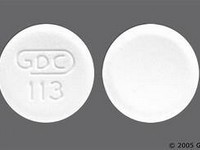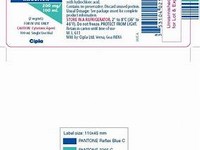Calcium carbonate

Calcium carbonate
CLINICAL USE
Phosphate binding agent Calcium supplement DOSE IN NORMAL RENAL FUNCTION
Dose adjusted according to serum phosphate and calcium levels PHARMACOKINETICS
Molecular weight :100.1 %Protein binding :40 %Excreted unchanged in urine : – Volume of distribution (L/kg) :–half-life – normal/ESRD (hrs) :– DOSE IN RENAL IMPAIRMENT
GFR (mL/MIN)
20 to 50 : Dose as in normal renal function. Titrate to response 10 to 20 : Dose as in normal renal function. Titrate to response <10 : Dose as in normal renal function. Titrate to response DOSE IN PATIENTS UNDERGOING RENAL REPLACEMENT THERAPIES
CAPD :Unknown dialysability. Dose as in normal renal function HD :Unknown dialysability. Dose as in normal renal functionHDF/high flux :Unknown dialysability. Dose as in normal renal functionCAV/VVHD :Unknown dialysability. Dose as in normal renal function IMPORTANT DRUG INTERACTIONS
Potentially hazardous interactions with other drugsCan impair absorption of some drugs, e.g. iron, ciprofloxacin ADMINISTRATION
Reconstition
– Route
Oral Rate of Administration
Comments
Take with or immediately before meals OTHER INFORMATION
Monitor for hypercalcaemia particularly if patient is also taking alfacalcidolCalcichew contains 1250 mg calcium carbonate (500 mg elemental calcium)Calcium 500 contains 1250 mg calcium carbonate (500 mg elemental calcium)Cacit contains 1250 mg calcium carbonate (500 mg elemental calcium).
See how to identify renal failure stages according to GFR calculation
See how to diagnose irreversible renal disease
Home









